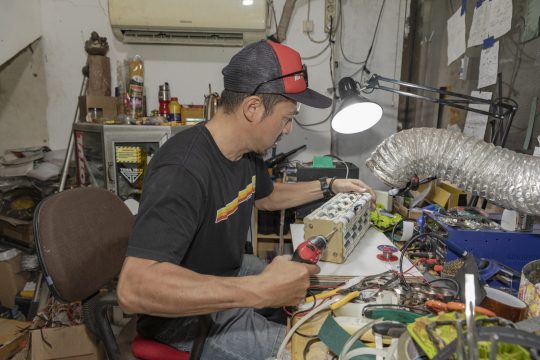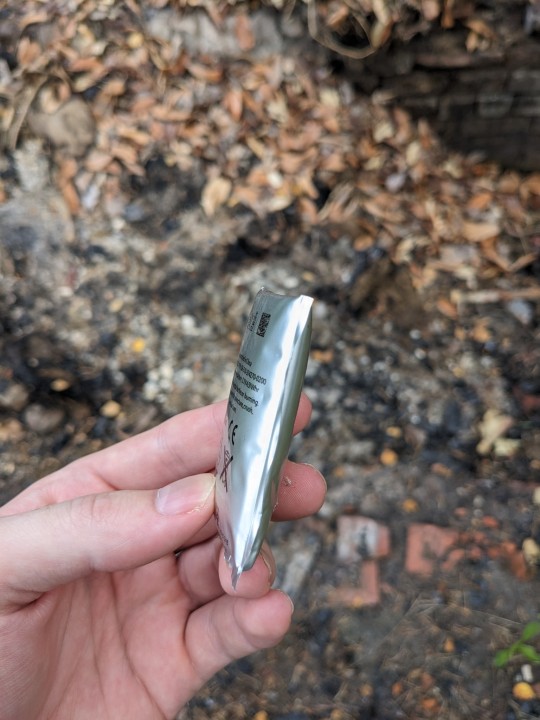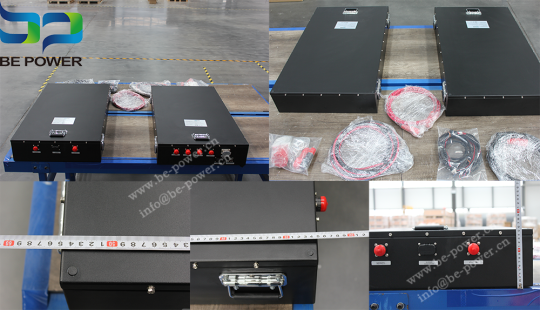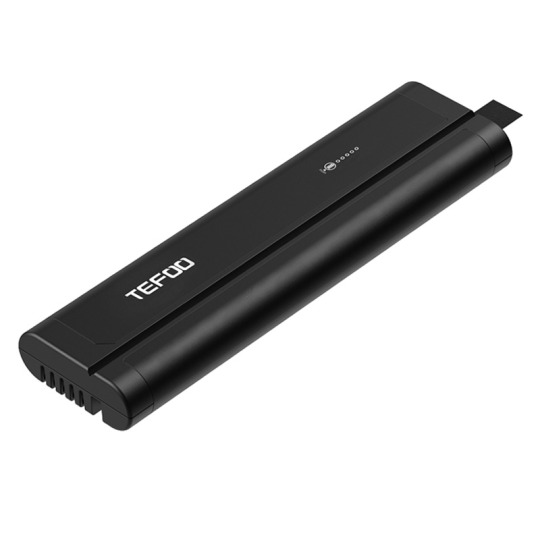#lithium battery
Text
Green energy for sustainability purposes? 🤔
#pay attention#educate yourselves#educate yourself#knowledge is power#reeducate yourself#reeducate yourselves#think for yourself#think for yourselves#think about it#question everything#ask yourself questions#lithium battery#electric vehicles#do your homework#you decide
379 notes
·
View notes
Text



Indonesia’s e-bike shops are building their own batteries
Dharmawan Kusna Handoyo spends his workday in a 2-by-3-meter cubicle, soldering batteries. He has been building DIY battery packs since 2009, when he installed one in his own electric bike — but in the past few years, it has become his main source of income. He sells the packs for hundreds of dollars apiece, luring back customers with the promise of a longer-range battery capacity.
22 notes
·
View notes
Text
Breakthrough in Recycling EV Batteries Can Recover 100% of Aluminum and 98% of Lithium Thanks to Swedish Scientists
18 notes
·
View notes
Text

Looking forward to meeting you!
Bosa is going to attend SolarTech Indonesia Exhibition from 6th to 8th, March, 2024!
We’re in d1h103, welcome to our booth and know more about our products~
#battery #batteryshow #batteryindonesia #SolarTechIndonesiaExhibition #solarenergy #solarbattery #renewableenergy #bess #energystorage #ess
2 notes
·
View notes
Text

Lifepo4 battery Supplier
3 notes
·
View notes
Text
youtube
The lithium-ion battery has powered us for decades. But for a renewable future, we need a new solution—and fast. So what are our options?
CORRECTION: In the video, at 05:40, we say lithium-ion batteries can only store energy for under four hours. This is incorrect. Four hours is the discharge duration that is currently economically viable.
Reporter: Beina Xu
Video Editor: Tomas Rosenberg
Supervising Editor: Joanna Gottschalk
We're destroying our environment at an alarming rate. But it doesn't need to be this way. Our new channel Planet A explores the shift towards an eco-friendly world — and challenges our ideas about what dealing with climate change means. We look at the big and the small: What we can do and how the system needs to change. Every Friday we'll take a truly global look at how to get us out of this mess.
#PlanetA #Lithium #Battery
Read more:
The future of energy storage: https://energy.mit.edu/wp-content/upl...
Projections of energy storage technology: https://www.nrel.gov/analysis/storage...
Power storage technology, using sand and engineered materials: https://www.sciencedirect.com/science...
IEA Electricity Market Report: https://www.iea.org/reports/electrici...
IEA Energy Storage Report: https://www.iea.org/reports/energy-st...
Costs and markets to 2030: https://www.irena.org/publications/20...
Chapters:
00:00 Intro
00:49 The lithium-ion battery
02:33 Hydro
03:46 Sodium-ion
05:00 Thermal heat
07:11 The future
#dw planet a#solarpunk#lithium-ion battery#lithium battery#lithium#battery#energy#renewable energy#green energy#clean energy#energy storage#Youtube#salt#sand
24 notes
·
View notes
Text
OPTIMA’s all-new D200+ battery maintainer automatically charges 12-volt lithium & lead-acid batteries, including AGM batteries at a maximum rate of 2 amps
https://www.optimabatteries.com/products/digital-d200/
#battery charger#battery maintainer#motorcycle battery#car battery#lithium battery#12volt#12v lithium battery
3 notes
·
View notes
Text
Which Electric Skateboard Battery Type is Most Common?
Everyone knows that an electric skateboard depends on its battery to run. If you don't charge your battery, your skateboard will essentially be a manual kick skateboard. So it's understandable that manufacturers take so much time when choosing the right batteries for their e-skateboard models.
Now, electric skateboards with lithium-ion batteries are popular, but some manufacturers still use lead-acid or lithium manganese.
Let's take a look at each battery type in more detail.
Lithium-Ion
This electric skateboard battery type is so popular because it stores a lot of energy for its physical weight, which means manufacturers can create longer-lasting electric skateboards. Better still, lithium-ion batteries have an excellent charge/discharge lifespan, which is why many manufacturers choose to implement them.
Lithium Manganese
While the lithium-ion battery is a popular choice, some manufacturers, such as Dualtron, choose lithium manganese as an alternative. Manganese can maintain low temperatures but still offers a high energy output, so it's a safe option for skateboards.
Lead-Acid
Lead-acid batteries used to be the go-to choice for cars and large golf carts, but most skateboard manufacturers choose a lithium battery instead. However, ultra-budget skateboards or models made for children might still contain a lead-acid battery because it's cheaper - but they lack the energy density of lithium batteries.
4 notes
·
View notes
Text
How to install a inverter battery?

Inverter batteries have a small amount of current consistent for a long time period. Lithium batteries are the best batteries for inverters. These are low-maintenance and the self-discharge is also less. Installing lithium batteries is the source to store electricity for later use. These batteries are mostly used for commercial, residential, and industrial areas. Installing a lithium inverter battery is a task that requires careful planning and execution to guarantee safety and optimal performance. Here are the general moves toward installing a lithium inverter battery.
What is Inverter Battery?
A lithium inverter battery, referred to as a lithium-ion battery for inverters, is a kind of rechargeable battery that is specifically designed for use in conjunction with inverters. Inverters are gadgets that convert Direct current (DC) electricity into alternating current (AC) electricity, which is used in household appliances and electronics use. These inverters are normally utilized in off-grid solar power systems, backup power systems, and uninterruptible power supply (UPS) systems. Lithium-ion batteries offer long life, quick battery charging, maintenance-free operation, and consistent backup.
youtube
How To Install A Lithium Inverter Battery?
When installing a lithium battery you need to follow the guidelines. Let us understand the guidelines on how to install an inverter battery:
Firstly, choose the right space or location to install the inverter battery. The location or space should be ventilated and dry. It should be installed at a location that should be out of reach for the children.
Next, Mount the inverter on the wall. Make sure that the wall has enough space to install the inverter power distribution box and ACDB. These inverters can be installed on walls and also on plywood. During the installation, the inverter and other accessories should be aligned carefully to avoid taking too long.
Now, Install the battery. Firstly, you should install ACDB near the inverter less than 2 meters distance. Then, install earthing. The next step is wiring. The wiring should be done properly like ACDB should be connected to Inverter properly. The battery should be connected to the Inverter properly. ACDB should be connected to the Main Distribution Box. Earthing should be connected to ACDB and the Inverter connected to the Load. Every wiring should be done accordingly so that the inverter does not get destroyed.
Conclusion:
I hope this article helped you to install the inverter battery. This guide is designed uniquely for electricians, service engineers, influencers, sales & marketing, and home & business owners who are planning to install the inverter battery at their businesses, homes, and buildings. To know more about inverter battery installation you should consult the best lithium battery manufacturers.
3 notes
·
View notes
Text
Situation diffused...

2 notes
·
View notes
Text
#pay attention#educate yourself#educate yourselves#reeducate yourself#knowledge is power#reeducate yourselves#think for yourself#think for yourselves#think about it#do your homework#do your research#do your own research#question everything#ask yourself questions#ask yourself#lithium battery
111 notes
·
View notes
Text
What is a deep cycle battery plus answers to your boat battery questions
As long as it looks like it’s doing its job, you probably don’t care much about your boat battery. In fact, many boat owners just use the original batteries that came along with their boat.
But what if your battery needs to be replaced? Or, what if you were buying your first boat? Do You Need Deep Cycle Marine Batteries? (yes!) Or would a starter battery do the trick? (Too!) Time to get to the boat batteries…and we’re here to help.
As technology advances, more and better batteries become available. But like a 10-page menu, more options make things more confusing. Might be more difficult to choose!
Marine batteries come in a variety of chemistry, sizes and uses. Before making a decision, it’s better to know what is a deep cycle marine battery, how does it works, and which is best.
First of all, we provide a short, less technical explanation of the most common terms on the boat battery:
Boat Battery Terms
Think of this basic term as “appetizer”. Familiarity with the battery vocabulary will help you to figure out the confusing specifications and jargon you may come across while shopping.
Amp Hour (AH)
This refers to the amount of energy your boat’s batteries can store. The larger the AH number, the larger the capacity.
Cycle
One cycle is a full discharge and a full charge. Deep cycle batteries usually have a cycle life or cycle rating. This rating indicates the number of cycles you can discharge and recharge the battery before it reaches 80% of its original capacity. At that point, most batteries will need to be replaced.
C rate (or Capacity Hour Rate)
It is actually a measurement of rate at which the battery be charged or discharged. You can also say it is the ratio between current draw, battery capacity and time. Most deep cycle marine batteries follow a standard 20 hour rate. The number “20” means discharge within 20 hours. For example, a battery with a capacity of 100AH and a rating of C20 can deliver 5 amps for 20 hours before being discharged.
Depth of Discharge (DOD)
This is the amount of your battery’s total capacity that you drain before recharging. For example, if your battery has reached 60% DOD, it means that you have 40% capacity left. A battery with a capacity of 100AH would have 60% DOD if you drained it to 40AH.
This is the total capacity of the battery that drain before recharging. For example, if your battery has reached 60% DOD, it means you have 40% capacity left only. If you drain a 100AH battery down to 40AH, it stands for 60% DOD.
Internal resistance
The term refers to the ability of a battery to resist energy as it is charged and discharged. The lower the internal resistance, the better. Batteries with higher internal resistance don’t charge as efficiently and can get hotter while charging because the energy lost is converted to heat.
State of Charge (SOC)
This is how much capacity your battery could be charged in. For example, a fully charged battery has a state of charge (SOC) of 100%.
What is a Deep Cycle Marine Battery?
Now for the main course: What is a deep cycle marine battery?This type of battery support you to power the trolling motor, radio, GPS, fish finder, and other gadgets on your boat (as well as RV parts, but that’s another topic). It is different from a starter battery or cranking battery, which we will discuss more below.
Deep cycle marine batteries can withstand multiple charges and discharges. That’s why (in most battery types) it has thick and heavy plates. It can survive rigorous charging and hundreds of cycles.
Like the tortoise in the old fable “The Tortoise and the Hare,” you might think of a deep cycle battery as a “slow and steady” power source. Their instantaneous power is limited. That’s why you can’t use them to start your motor. For this, you’ll need a starter/starter battery, which we discuss below.
5 notes
·
View notes
Text
Can Lithium Ion Batteries Leak?

Lithium ion batteries are highly efficient energy storage devices, and they have revolutionized industry in many ways. It is important to understand the potential risks associated with these batteries, including their propensity for leaking.
Leaking of a battery can be caused by several factors, such as overcharging or prolonged use at high temperatures.
When lithium ions escape from the cells, they may cause damage to surrounding objects or people.
The good news is that modern lithium-ion batteries are designed with safety features that help reduce the chance of leakage occurring.
These include temperature sensors that cut off charging if it reaches an unsafe level and pressure valves that act as a release mechanism should too much gas build up inside the cell.
Additionally, manufacturers typically provide warning labels on products containing lithium-ion batteries informing users about proper usage and cautioning against overcharging or exposing them to excessive heat.
By following these guidelines, the risk of leaking can be greatly reduced.
2 notes
·
View notes
Text

According to customer requirements, we independently designed and produced this 48V 420A battery pack. This battery system is composed of 64 105Ah A-grade batteries that are connected in parallel first and then in series, which effectively reduces the internal circulation of the battery and makes it more stable, and the addition of pre-charging resistors and relays makes charging and discharging safer.
learn more
www.be-power.cn
4 notes
·
View notes
Text

LFP batteries have great advantages in terms of performance, range, safety, the use of lithium batteries in the passenger car industry is also becoming increasingly common.
As a professional battery supplier, Bosa is focusing on offer lithium batteries and all the services about lithium battery, we’re glad to discuss with you: www.bosaenergy.cn [email protected]
2 notes
·
View notes
Text
Why do medical equipment batteries use lithium batteries?
Lithium battery is a kind of battery that uses lithium metal or lithium alloy as negative electrode material and uses non-aqueous electrolyte solution. Lithium batteries can be roughly divided into two categories: lithium metal batteries and lithium ion batteries. Lithium-ion batteries do not contain lithium in the metallic state and are rechargeable. Due to the very active chemical properties of lithium metal, the processing, storage and use of lithium metal have very high environmental requirements. Therefore, lithium batteries have not been used for a long time. Lithium batteries have now become mainstream.

Performance characteristics of lithium batteries:
Long service life, the service life can reach more than 6 years, the battery with lithium iron phosphate as the positive electrode is charged and discharged with 1CDOD, and there is a record of 10,000 times of use;
The specific energy is relatively high. It has high storage density, which has reached 460-600Wh/kg, which is about 6-7 times that of lead-acid batteries;
With high power tolerance, the lithium iron phosphate lithium ion battery for electric vehicles can reach 15-30C charge and discharge capacity, which is convenient for high-intensity startup acceleration;
The rated voltage is high (the single working voltage is 3.7V or 3.2V), which is approximately equal to the series voltage of 3 nickel-cadmium or nickel-hydrogen rechargeable batteries, which is convenient to form a battery power pack;
Light weight, the weight is about 1/5-6 of lead-acid products under the same volume;
The production basically does not consume water, which is very beneficial to my country, which is short of water.
High and low temperature adaptability, can be used in the environment of -20℃--60℃, and can be used in the environment of -45℃ after technical treatment;
Lithium batteries have excellent performance, long life, and safe use, with an energy density of up to 7,000 kilowatts per kilogram (W). And compared with other batteries, its use cost is lower. However, the high temperature of medical equipment and the environment, and the harsh use conditions put forward more stringent requirements on the performance of lithium batteries, which requires the lithium batteries of medical equipment to be further improved in terms of safety and durability, strong capacity release capability, and long service life. So now medical equipment uses lithium batteries.
E-Mail:[email protected]
Technical Support:[email protected]
Website:efoo-energy.com
Official shop:
5 notes
·
View notes